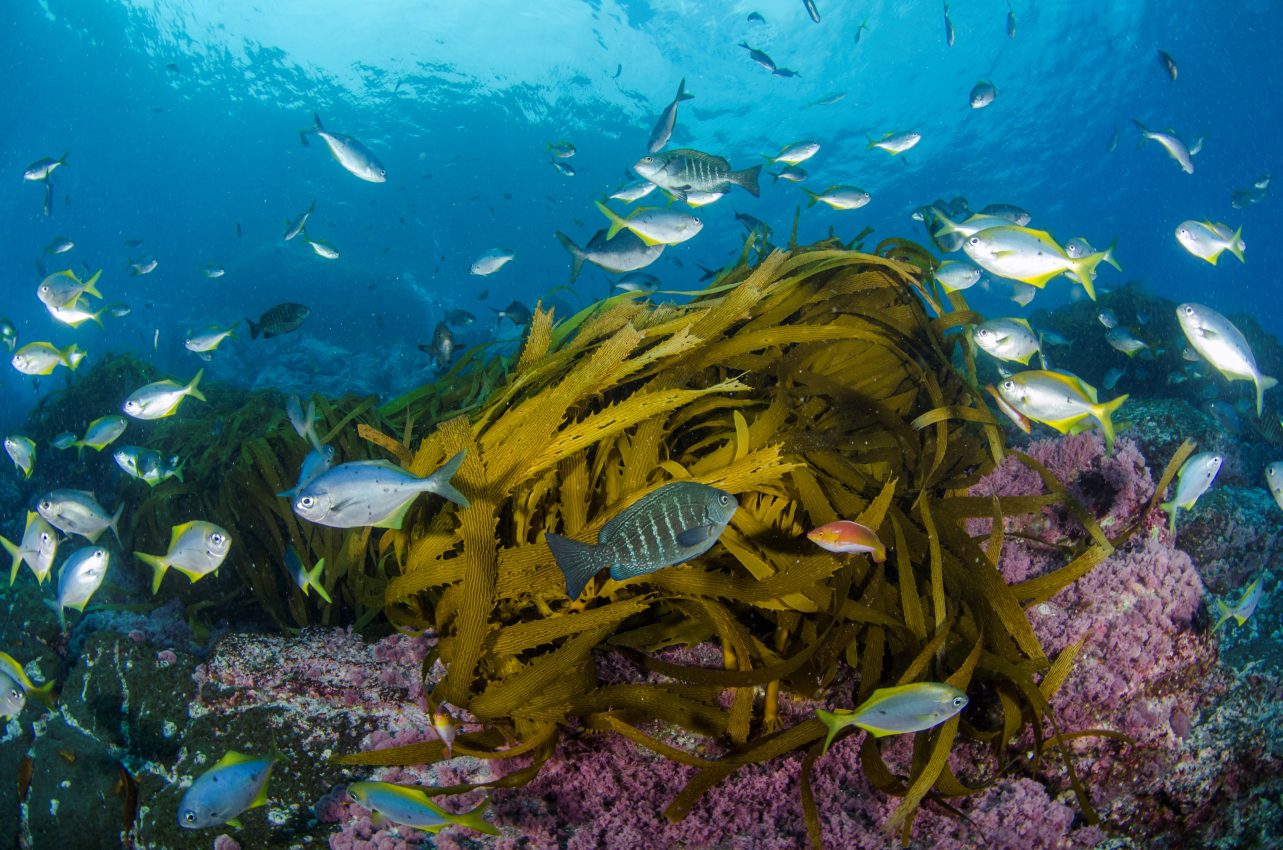October 6, 2017
Seaweed could be scrubbing more carbon from the atmosphere than we expected
BY: Sarah Bedolfe
If you’ve ever eaten sushi, you know that seaweed goes great with rice and fish. But recent research suggests that seaweed is more than just a culinary partner — it could be an overlooked ally in the fight against climate change. By dying and drifting down to the deep sea, marine algae (or seaweed) like kelp may sequester more carbon than we previously realized.
Saltwater plants like mangroves and seagrasses have been well-known dynamos when it comes to storing carbon. Per acre, these “blue carbon” ecosystems can take up to 20 times more CO2 from the atmosphere than land-based forests. The secret to their carbon-storing success lies not in the plants, but in the rich muck they grow in. As marine plants grow and die, their leaves, roots, stems and branches wind up buried in underwater sediments. These low-oxygen sediments can store carbon for decades or longer.
Seaweeds, on the other hand, were long ignored as a carbon sink. These algae often grow on rocky surfaces where their fronds can’t be buried in soil or sediment. Many species have air bladders that make them less likely to sink, and some, like sargassum, even float unattached their entire lives. Seaweed cells are soft and easy to digest, so they are more likely to be eaten by animals or broken down by bacteria. Digestion or decomposition releases seaweeds’ stored carbon back into the air or water, where it reacts with oxygen to become CO2 and continue the carbon cycle.
But a study published in Nature Geoscience found that our assumptions about seaweed’s role in carbon sequestration could be wrong. The study estimated that about 11 percent of total seaweed production may be sequestered, most of it after it sinks down into the deep sea.
That might not sound like a lot. But seaweeds are incredibly efficient when it comes to sucking carbon up and using it to grow. Kelp, for example, can shoot up by as much as two feet each day.
“It’s a small percent, but it’s a small percent of a very large number,” said Carlos Duarte, a biologist at the King Abdullah University of Science and Technology and one of the study’s authors. The total production by seaweeds is so large that even if just a small fraction is sequestered, it’s “enough to be globally relevant.”
All in all, super-powered seaweeds could sequester around 173 million metric tons of carbon each year, about as much as the annual emissions of the state of New York. These numbers are just estimates right now. Duarte and his colleagues plan to conduct field research to get hard data on the sequestration potential of sinking seaweed.
Sonja Smith, a marine biologist who studies how nutrients move through ocean ecosystems, was surprised to learn that the carbon in seaweed could be getting stored in the deep sea. “We assumed it mostly cycles back,” she said. “So if a lot of deep sea carbon originates from kelp, that would be amazing.”
Because kelp forests and other seaweed habitats sequester carbon, Duarte said, they should be considered for “blue carbon” efforts that aim to protect and restore carbon-rich marine ecosystems. Alarmingly, between one quarter and one half of coastal plant habitats have been lost over the last 50 years, and rising temperatures are already shifting the boundaries of kelp forests.
“These findings add one more dimension to the need to protect kelps and seaweed ecosystems,” Duarte said. “When we lose kelp we don’t only lose habitat that is a significant for many species, but we also lose an important carbon sink.”




